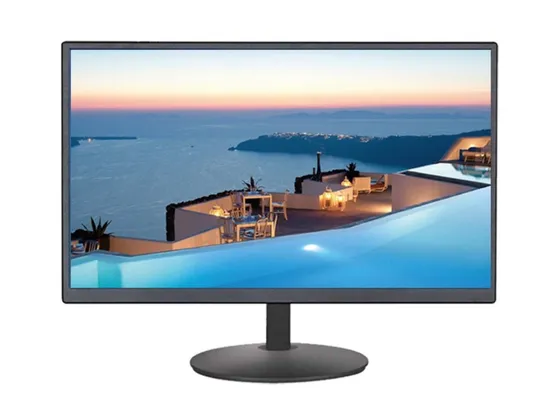The last decade has seen a sea change in the journey of 1080p computer monitors, more colloquially described as Full HD displays. From early adoption as a premium option to becoming the mainstream choice, 1080p monitors have played an integral role in shaping the landscape of personal and professional computing. This article looks at how these displays have evolved, highlighting technological advancements, market trends, and their continued relevance in today’s screen-dominated world.

1080p Emerges: The Game-Changer for Early 2010s
The 1080p resolution formed a major breakthrough for early 2010s computer monitors. These displays pack more pixels—1920 x 1080 as against the former 720p HD screens—and were comparatively unprecedented when they came in terms of clarity and acuity. By that time, full HD monitors had targeted many gamers, designers, and professionals interested in enhanced screen performance.
Brands started implementing IPS technology to enhance color reproduction, making the 1080p monitors highly suitable for photo editing, graphic design, and video streaming. As prices gradually reached an affordable level, the resolution became standard for office and home settings.
Technological Advancement Beyond Basic Display
1080p monitors have seen great updates over the last decade. While early versions merely had basic functionality, more modern versions focus on adaptability, robustness, and an immersive experience.
Higher Refresh Rates
Early 1080p monitors were confined to a refresh rate of 60Hz. By the mid-2010s, monitors with 144Hz and even 240Hz refresh rates became common and changed how gamers and video editors viewed motion clarity.
Better Panel Technology
Early 1080p monitors used TN panels, mostly characterized by fast response times but limited viewing angles and color depth. In due time, they were replaced by IPS and VA displays boasting better visuals with rich colors and higher contrast.
Introduction of Adaptive Sync
With the introduction of NVIDIA’s G-Sync and AMD’s FreeSync on 1080p monitors, screen tearing was reduced, making them perfect for demanding applications in gaming and further minimizing blur in high-action motion.
Ultra-Slim Bezels
Modern frameless monitors are designed with slim bezels, which have become a trend for dual-monitor setups. The result is seamless multi-screen configurations and a clean, sleek look.
Energy Efficiency
Due to advancements in energy-efficient technologies, most monitors received ENERGY STAR certifications, translating into lower power consumption—a selling point to eco-conscious consumers.
Market Trends: A Decade of Shifting Preferences
From Premium to Mainstream
Full HD monitors started off as premium products but found their way into the mainstream during the late 2010s, with decreases in manufacturing costs. Today, 1080p screens are the minimum for most purchases.
Popularity in Specific Segments
- Gaming: Full HD gaming monitors continue to remain a popular choice with professional gamers because reduced resolution results in higher frame rates on mid-range GPUs.
- Office Use: These 1080p monitors have retained their place in the workplace on grounds of being economical and well-compatible with productivity software.
- Portable Displays: Full HD resolution on smaller USB-C portable monitors has become a hit with remote workers and frequent travelers.
Affordable 4K Monitor Segment Heats Up
Until the last couple of years, 4K resolution was prohibitively expensive to introduce any real competition. However, 1080p monitors still rule the roost in markets where price sensitivity and performance remain important.
User Experiences: What Has Changed?
Consumers today have access to 1080p displays that not only deliver crisp visuals but also cater to diverse applications. Here’s how the user experience has transformed:
- Gaming: Smoother gameplay due to high-refresh-rate 1080p monitors, perfect for both eSports enthusiasts and first-time gamers.
- Entertainment: 1080p was the default resolution in which Netflix, Hulu, YouTube, and other services released content, leading users to buy compatible monitors.
- Workplace Productivity: Split-screen technologies and multitasking features ensure users can maximize workspace efficiently on Full HD screens.
Why 1080p Still Matters in 2025
Even though 1440p and 4K resolutions have been gaining momentum, there are several reasons why 1080p monitors remain a go-to option:
- Cost-Effectiveness: Full HD monitors are so reasonably priced that anyone, from students to small business owners, can buy one.
- Balanced Performance: With support for smooth visuals and decent image quality, these monitors provide an excellent mix of functionality and price, particularly for basic computing and mid-level gaming.
- GPU Accessibility: Unlike the more sensitive monitors, 1080p monitors can be powered by a wide range of graphics cards in much lower price brackets, making them accessible for more people.
The Future of 1080p Monitors
While new technologies might push their way into premium segments, Full HD resolution is here to stay. As for manufacturing, over the next few years, the focus is likely to revolve around:
- Better Color Accuracy: Inclusion of quantum dot technology and HDR for value addition.
- Sustainability: Ongoing efforts toward energy efficiency and greener production methods.
- Versatility: Additions like touchscreens and ultrawide configurations appealing to niche audiences.
Final Thoughts
The evolution of the 1080p computer monitor over the last ten years exemplifies the industry’s ability to meet consumer demand while refining technological capabilities. What once was considered a luxury has now grown to become a staple in every household, office, and gaming setup.
For users on a budget but unwilling to give up quality, a Full HD monitor remains one of the smartest and most practical options. Further development and incorporation in modern devices show how relevant it is in today’s ever-changing digital world. Be it for gaming, professional, or regular efficient display purposes—the journey of 1080p monitors promises there will always be a model suited to your needs.
-1-1024x1024.webp)